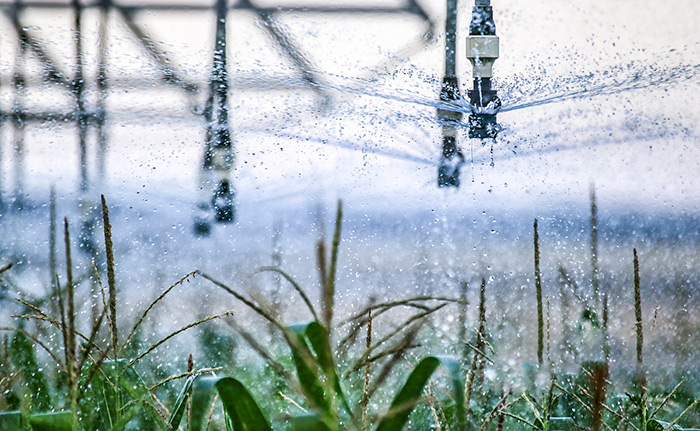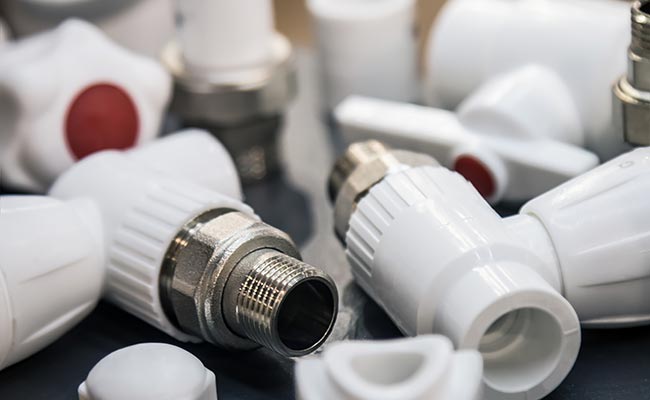You need to install a valve, but choosing the wrong type could mean hours of extra work later. A simple repair could force you to cut pipes and shut down the entire system.
A double union ball valve can be completely removed from a pipeline for repair, while a single union valve cannot. This makes the double union design far superior for maintenance and long-term service.
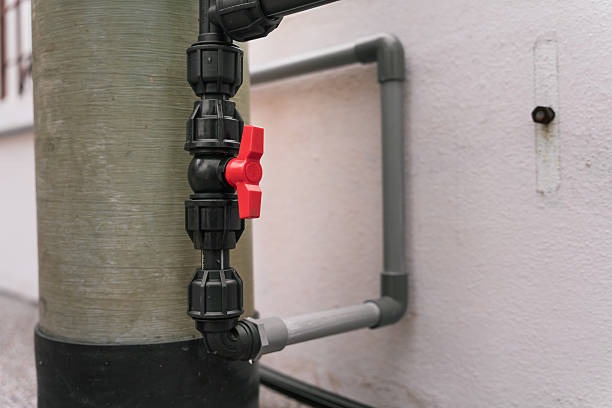
The ability to easily service a valve is a huge factor in total cost of ownership. It’s a key topic I discuss with partners like Budi, a purchasing manager in Indonesia. His customers, especially those in industrial settings, can’t afford long downtimes. They need to be able to swap out a valve’s seals or the entire valve body in minutes, not hours. Understanding the mechanical difference between single and double union designs will help you choose a valve that saves you time, money, and major headaches down the road.
What is the difference between single union ball valve and double union ball valve?
You see two valves that look similar but have different names and prices. This makes you wonder if the cheaper single union option is “good enough” for your project.
A double union has threaded connectors on both ends, allowing it to be completely removed. A single union has one connector, meaning one side is permanently fixed, usually by solvent cement.
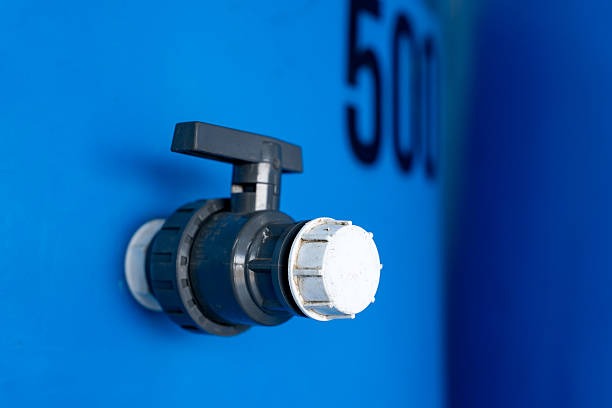
Think of it like repairing a car tire. The double union valve is like a wheel held on by lug nuts; you can easily take the whole wheel off to fix it. The single union valve is like a wheel that is welded to the axle on one side; you can’t really remove it for service. You can only disconnect one end and swing it out of the way. If the valve body itself fails or you need to replace the seals, the double union design is vastly superior. Budi’s contractors will only use double union valves for critical applications because they can perform a complete replacement in under five minutes without cutting a single pipe. The small extra upfront cost pays for itself the very first time maintenance is required.
What is the difference between single valve and double valve?
You hear terms like “single valve” and “double valve” and get confused. You worry you might be misinterpreting the specifications for a project, leading to incorrect orders.
“Single valve” usually means a simple, one-piece valve with no unions. “Double valve” is often shorthand for a “double union ball valve,” which is a single valve unit that has two union connections.
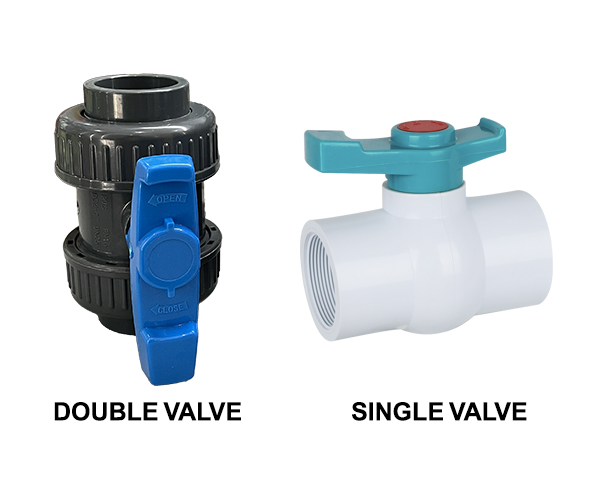
The terminology can be tricky. Let’s clarify. A “single valve” in its simplest form is often a “compact” or one-piece ball valve. It is a sealed unit that is glued directly into the pipeline. It is cheap and simple, but if it fails, you have to cut it out. A “double valve” or “double union valve” refers to our hero product: a three-piece unit (two union ends and the main body) that allows for easy removal. It’s important not to confuse this with a “double block” setup, which involves using two separate, individual valves for high-security isolation. For 99% of water applications, a single “double union” ball valve provides the perfect balance of secure shutoff and easy serviceability. It’s the standard we recommend at Pntek for any quality installation.
Valve Serviceability Comparison
| Valve Type | Can it be fully removed? | How to repair/replace? | Best Use Case |
|---|---|---|---|
| Compact (One-Piece) | No | Must be cut out of the pipeline. | Low-cost, non-critical applications. |
| Single Union | No | Can be disconnected on one side only. | Limited service access is acceptable. |
| Double Union | Yes | Unscrew both unions and lift out. | All critical systems requiring maintenance. |
What is the difference between a type 1 and type 2 ball valve?
You’re looking at an old blueprint or a competitor’s spec sheet and see “Type 1″ or “Type 2″ valve. This outdated jargon creates confusion and makes it hard to compare to modern products.
This is older terminology. “Type 1″ usually referred to a basic, one-piece valve design. “Type 2″ referred to a newer design with improved serviceability, which evolved into today’s true union ball valves.
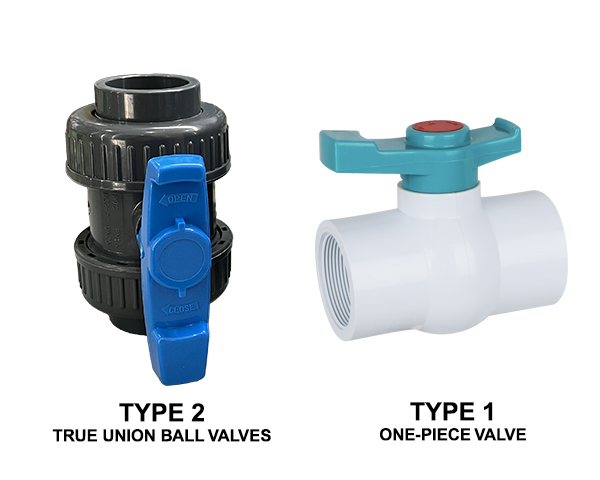
Think of it like a “Type 1″ car being a Model T and a “Type 2″ being a modern vehicle. The concepts are the same, but the technology and design are worlds apart. Decades ago, the industry used these terms to differentiate ball valve designs. Today, the terms are mostly obsolete, but they can still appear on old plans. When I see this, I explain to partners like Budi that our Pntek true union ball valves are the modern evolution of the “Type 2″ concept. They are designed from the ground up for easy seat and seal replacement and in-line removal. You should always specify “true union ball valve” to ensure you are getting a modern, fully serviceable product, not an outdated design from a decades-old specification sheet.
What is the difference between DPE and SPE ball valves?
You read a technical data sheet that mentions DPE or SPE seats. These acronyms are confusing, and you fear choosing the wrong one could create a dangerous pressure situation in your pipeline.
SPE (Single Piston Effect) and DPE (Double Piston Effect) refer to how the valve seats handle pressure when the valve is closed. SPE is the standard for PVC valves, as it automatically vents pressure safely.
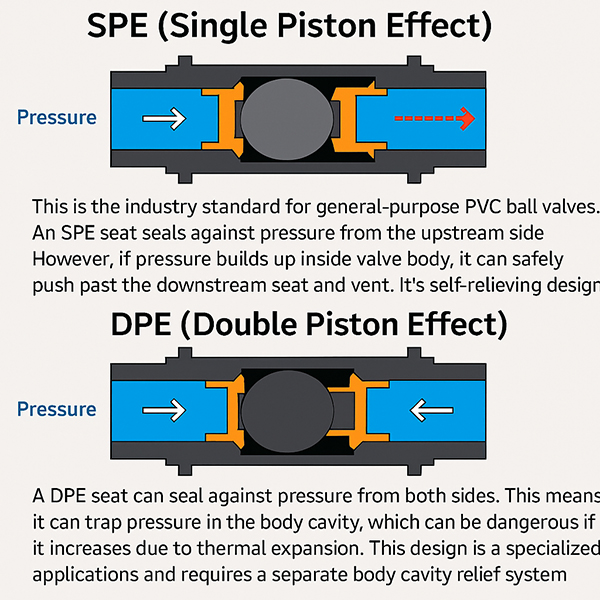
This gets technical, but the concept is critical for safety. In a closed valve, pressure can sometimes become trapped in the central body cavity.
- SPE (Single Piston Effect): This is the industry standard for general-purpose PVC ball valves. An SPE seat seals against pressure from the upstream side. However, if pressure builds up inside the valve body, it can safely push past the downstream seat and vent. It’s a self-relieving design.
- DPE (Double Piston Effect): A DPE seat can seal against pressure from both sides. This means it can trap pressure in the body cavity, which can be dangerous if it increases due to thermal expansion. This design is for specialized applications and requires a separate body cavity relief system.
For all standard water applications, like the ones Budi’s clients have, an SPE design is safer and what we build into Pntek valves. It prevents dangerous pressure buildup automatically.
Conclusion
A double union ball valve is superior for any system needing maintenance, as it can be fully removed without cutting pipes. Understanding valve design ensures you choose correctly.
Post time: Aug-05-2025


